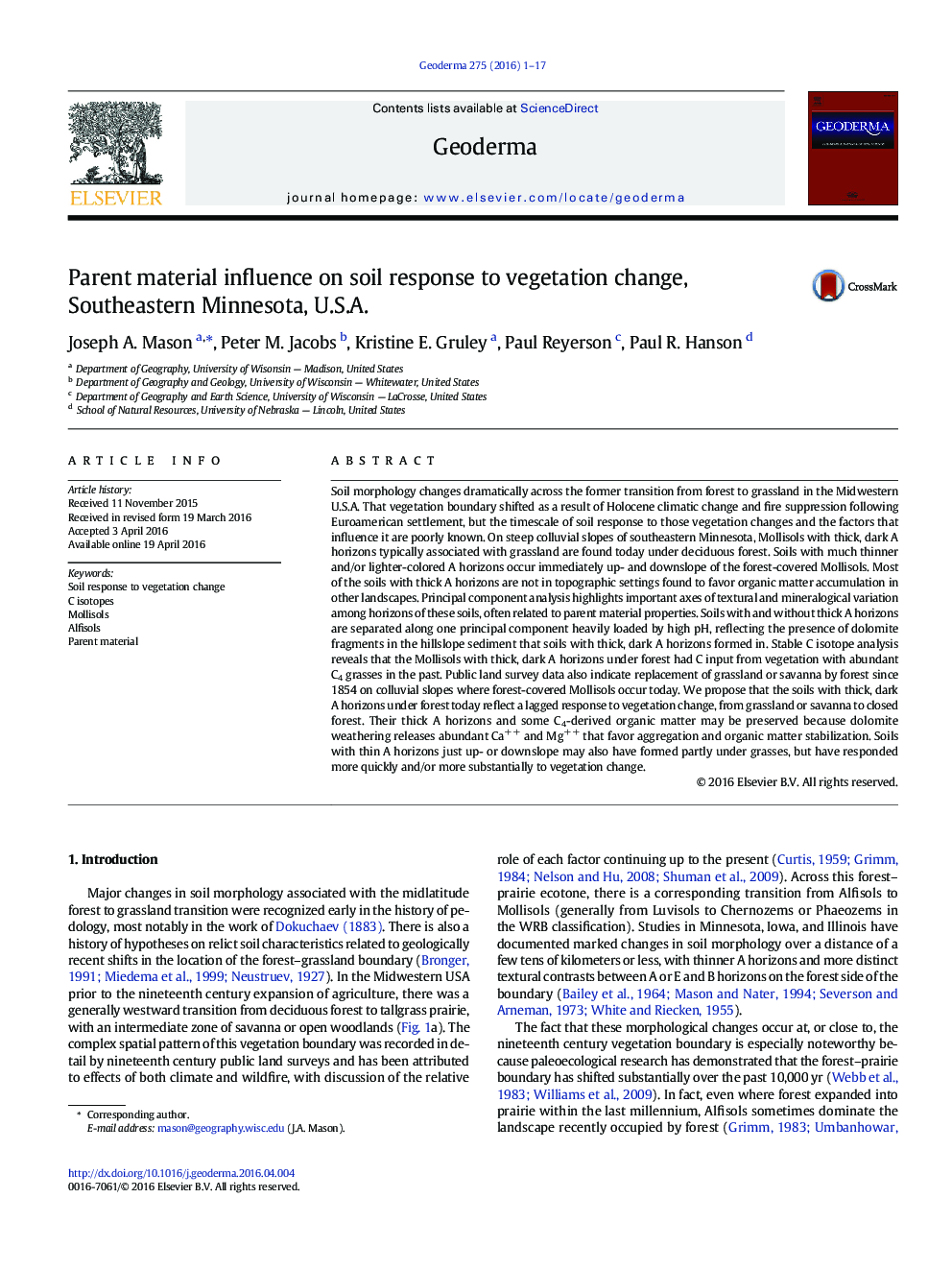| کد مقاله | کد نشریه | سال انتشار | مقاله انگلیسی | نسخه تمام متن |
|---|---|---|---|---|
| 4572896 | 1629442 | 2016 | 17 صفحه PDF | دانلود رایگان |

• Thick A horizons occur under forest in southeastern Minnesota.
• C isotopes indicate that the thick A horizons initially formed under grassland or savanna.
• Dolomite-rich parent material favored preservation of thick A horizons under forest.
• Soils in other parent materials responded more quickly to vegetation change.
Soil morphology changes dramatically across the former transition from forest to grassland in the Midwestern U.S.A. That vegetation boundary shifted as a result of Holocene climatic change and fire suppression following Euroamerican settlement, but the timescale of soil response to those vegetation changes and the factors that influence it are poorly known. On steep colluvial slopes of southeastern Minnesota, Mollisols with thick, dark A horizons typically associated with grassland are found today under deciduous forest. Soils with much thinner and/or lighter-colored A horizons occur immediately up- and downslope of the forest-covered Mollisols. Most of the soils with thick A horizons are not in topographic settings found to favor organic matter accumulation in other landscapes. Principal component analysis highlights important axes of textural and mineralogical variation among horizons of these soils, often related to parent material properties. Soils with and without thick A horizons are separated along one principal component heavily loaded by high pH, reflecting the presence of dolomite fragments in the hillslope sediment that soils with thick, dark A horizons formed in. Stable C isotope analysis reveals that the Mollisols with thick, dark A horizons under forest had C input from vegetation with abundant C4 grasses in the past. Public land survey data also indicate replacement of grassland or savanna by forest since 1854 on colluvial slopes where forest-covered Mollisols occur today. We propose that the soils with thick, dark A horizons under forest today reflect a lagged response to vegetation change, from grassland or savanna to closed forest. Their thick A horizons and some C4-derived organic matter may be preserved because dolomite weathering releases abundant Ca++ and Mg++ that favor aggregation and organic matter stabilization. Soils with thin A horizons just up- or downslope may also have formed partly under grasses, but have responded more quickly and/or more substantially to vegetation change.
Journal: Geoderma - Volume 275, 1 August 2016, Pages 1–17